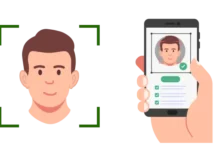The Silent Language of Pain: Why Pointing on a Chart Matters

In a clinic, words often fail. A patient’s hand hovers over their lower back, making uncertain circles. “It’s here… but deeper. And sometimes it shoots down… here?” This vague gesturing isn’t a patient’s fault. It’s a fundamental breakdown in medicine’s most crucial currency: communication.
That breakdown has real costs. Misunderstood pain locations lead to misdirected treatments, extended suffering, and frustrated clinicians who know they’re missing pieces of the puzzle. The solution isn’t asking better questions. It’s showing. It’s giving patients a tool to speak a clearer language. That tool is the medical body pain chart.
Forget the clipboard form. Think of it as a translator. It converts subjective, hard-to-describe sensations into objective, visual data that a clinician can immediately understand. This isn’t about paperwork. It’s about precision.
Why “Where” is the First Question That Matters
In musculoskeletal health, location isn’t just a detail; it’s often the master clue. Pain in the lower back alone could be a muscle. Pain that radiates down the leg in a specific stripe? That’s the classic signature of a nerve issue. The difference changes everything: the diagnosis, the treatment, the recovery timeline.
A back pain location chart cuts through the verbal noise and stops the guessing game. When patients shade a precise area on a diagram, they give a clinician a map. That map allows for pattern recognition. A trained eye can look at that map and immediately narrow the list of potential culprits. The subsequent physical exam is a targeted mission, not a blind fishing expedition.
The Tangible Impact: Better Visits, Better Outcomes
This simple act of marking a chart creates a ripple effect of improvements throughout the clinic.
For the Patient: Finally Being Understood
Medical appointments are stressful. That stress makes it harder to think clearly and describe complex physical feelings. Handing someone a medical body pain chart does something powerful: it reduces their cognitive load. The task is simple, visual, and intuitive. “Show me where.” This simple shift empowers patients. They leave the interaction feeling heard and confident that their provider truly grasps their experience. That confidence builds trust, the foundation of any successful treatment relationship.
For the Provider: Efficiency and Accuracy
For a clinician, time is the scarcest resource. A pre-visit back pain location chart is like a clinical cheat sheet. Before even shaking the patient’s hand, the clinician has valuable data. They can see if the pain is localized or radiating, unilateral or bilateral. This allows them to walk into the room with a preliminary hypothesis already forming. The examination becomes more efficient, more focused, and ultimately, more accurate. It transforms the appointment from a fact-finding interview into a focused confirmation of what the chart already suggests.
The Digital Leap: From Paper to Precision
The traditional paper chart has long been a dependable workhorse in healthcare, serving as a simple way to capture patient concerns and symptoms. However, as with many tools rooted in paper, its limitations are undeniable—handwriting can be unclear, details can be missed, and charts can be misplaced. Technology has now transformed this process, unlocking the chart’s true potential by shifting it into a digital, interactive format.
Modern digital intake platforms seamlessly weave these enhanced charts into the pre-appointment workflow. Patients receive a secure link on their phone or email, allowing them to interact with a digital medical body pain chart before they even arrive at the clinic. Instead of scribbling vague notes or circling broad areas, patients can tap precise points on a visual body outline, highlight multiple regions, and even use color coding to distinguish between stabbing, burning, throbbing, or aching pain. Some platforms let patients draw arrows or lines to show pain radiation or spreading discomfort.
All of this rich, structured data flows directly into the electronic health record, completely legible and instantly accessible. This eliminates administrative headaches, ensures accuracy, prevents information loss, and provides clinicians with a reliable visual baseline to measure changes and track progress over time.
What Makes a Truly Great Pain Chart?
Not all charts are created equal. A useful one needs:
- Anatomical Integrity: The illustration must be accurate. A cartoonish body won’t cut it. Clinicians need to see realistic proportions and landmarks.
- Dead-Simple Usability: If a patient needs instructions to use it, it’s already failed. The interface must be intuitive for every age and tech level.
- Multiple Views: A single back view isn’t enough. Comprehensive charts show the front, back, and sides.
- Clinical Utility: It must capture what matters for diagnosis: radiation, depth, and sometimes quality.
It’s About Better Medicine with SimpleInteract
Implementing a systematic approach to pain mapping isn’t an administrative task. It’s a clinical strategy. It’s a commitment to starting the diagnostic process with clarity instead of confusion. This is where a platform like Simple Interact becomes indispensable. Integrating intuitive digital medical body pain chart tools directly into your patient intake workflow, SimpleInteract ensures that this critical visual data is captured accurately, stored securely, and made instantly accessible within the patient’s record.
The back pain location chart is more than a diagram. It’s a communication bridge, one that SimpleInteract helps you build and maintain effortlessly. This leads to faster, more accurate diagnoses, more efficient use of clinical time, and patients who feel genuinely seen. Ultimately, that transforms good care into exceptional care, and SimpleInteract provides the tools to make it happen.








